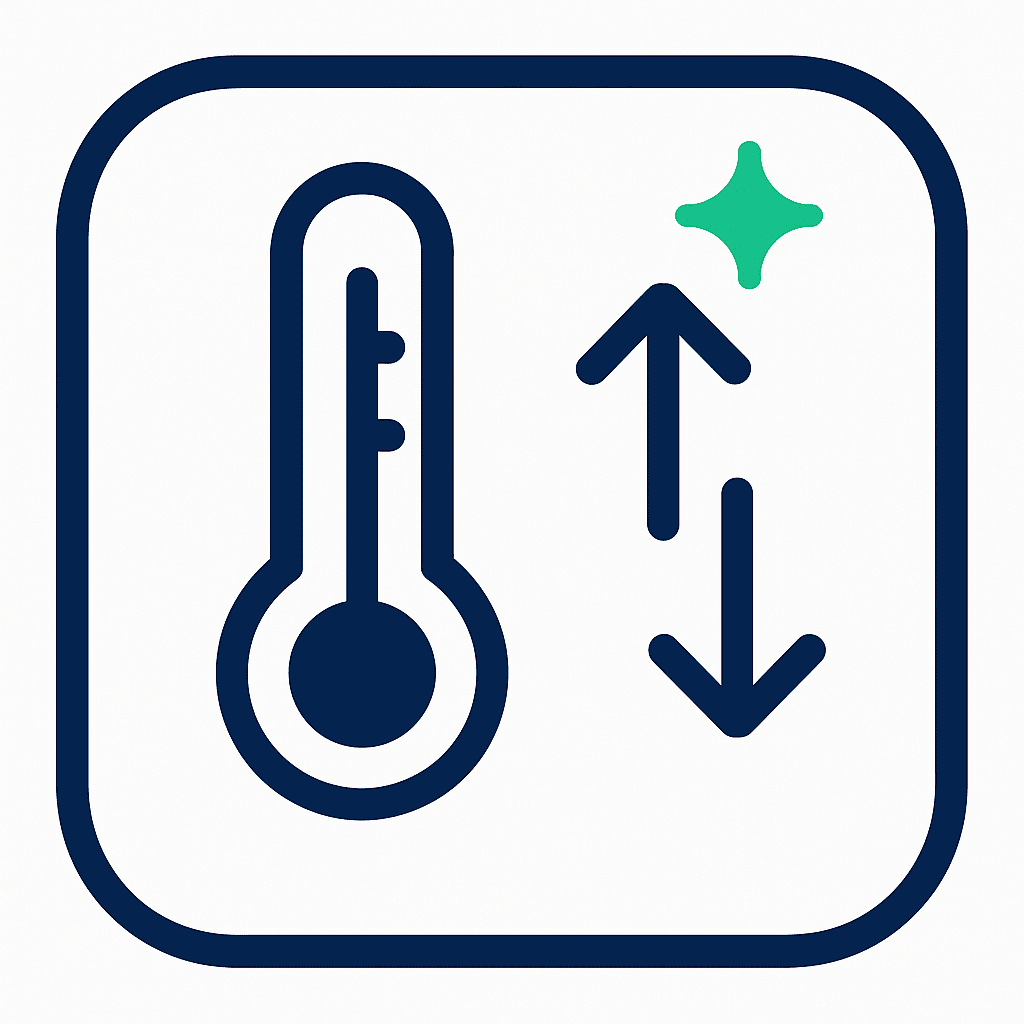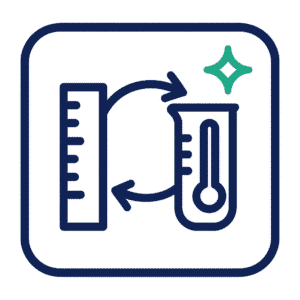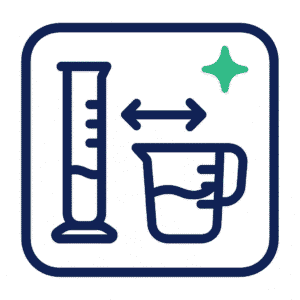A methodical presentation follows on the mathematical, historical, metrological, and practical aspects of converting temperatures between common scales. The treatment is technical, quantitatively precise, and includes primary-source citations for foundational definitions. Emphasis is placed on algebraic derivations, numerical stability, rounding practice, and examples suitable for engineering, laboratory, programming, and everyday use.
Historical And Metrological Context
Temperature measurement has evolved from qualitative observations to an exact system tied to physical constants. Daniel Gabriel Fahrenheit developed a practical mercury thermometer and introduced the scale that bears his name in 1724. Britannica summarizes his contribution: “He is best known for inventing the mercury thermometer (1714) and developing the Fahrenheit temperature scale (1724), which is still commonly used in the United States.” (Encyclopedia Britannica)

Anders Celsius proposed a centigrade scale in 1742. The original orientation of his scale placed 0 at the boiling point of water and 100 at the freezing point; later inversion produced the contemporary arrangement with 0 °C at water’s freezing point and 100 °C at its boiling point at standard pressure. (Encyclopedia Britannica +1)
Thermodynamic temperature was placed on an absolute footing by William Thomson, later Lord Kelvin. Modern metrology defines the kelvin in terms of the Boltzmann constant. The Bureau International des Poids et Mesures states: “The kelvin, symbol K, is the SI unit of thermodynamic temperature. It is defined by taking the fixed numerical value of the Boltzmann constant k to be 1.380 649 × 10?²³ when expressed in the unit J K?¹.” (BIPM)
A succinct statement often attributed to Lord Kelvin captures the empirical emphasis behind unit definition and measurement: “I often say that when you can measure what you are speaking about, and express it in numbers, you know something about it.” The remark appears in his 1883 lecture on electrical units and is widely cited in works on measurement science. (WIST Quotations +1)
Common Temperature Scales — Definitions And Reference Points
A compact list of the scales that appear most in engineering and science follows, together with their defining reference points.
- Kelvin (K). Thermodynamic temperature unit in the International System of Units (SI). Zero kelvin (0 K) is absolute zero. The kelvin is defined by fixing the Boltzmann constant to an exact numerical value. (BIPM +1)
- Celsius (°C). A scale with degree size equal to the kelvin. By definition, 0 °C = 273.15 K. The conventional laboratory references are water’s triple point and standard atmospheric boiling/ freezing points. (NIST)
- Fahrenheit (°F). A scale introduced in the early 18th century. Water freezes at 32 °F and boils at 212 °F at sea-level pressure. Historical motivations involved reproducible fixed points using salt–ice mixtures and human body temperature calibrations. (Encyclopedia Britannica)
- Rankine (°R or °Ra). An absolute scale using Fahrenheit-sized degrees. Zero Rankine equals 0 K; conversion uses an additive offset analogous to Kelvin–Celsius conversions.
Key numerical equivalences used throughout calculations:
- 0 K = -273.15 °C. (NIST)
- 0 K = -459.67 °F (exactly -459.67 when converting from the accepted relation between K and °F; experimental uncertainties do not affect this conventional conversion to the precision shown). (Wikipedia)
- Water freezing point: 0 °C = 32 °F. Boiling point at 1 atm: 100 °C = 212 °F (approximate experimental corrections exist for vapor pressure and purity). (Encyclopedia Britannica +1)
Algebraic Conversion Formulas
Mathematical relations between scales are linear affinities. The algebra is exact and derived from two-point calibrations or degree-size equivalences.
Celsius ? Fahrenheit
Derivation uses two reference points: freezing of water (0 °C ? 32 °F) and boiling of water (100 °C ? 212 °F). The difference of 100 °C corresponds to 180 °F. Hence the degree-size ratio is 9:5.
- °F = °C × 9/5 + 32.
- °C = (°F – 32) × 5/9.
Numbers used in examples should be calculated digit-by-digit for accuracy when hand-derived, and using double precision in programmatic contexts.
Celsius ? Kelvin
The degree sizes are identical. The conversion is purely additive.
- K = °C + 273.15.
- °C = K – 273.15.
The constant 273.15 is exact by definition of the Celsius scale relative to the kelvin as used in the SI. (NIST)
Kelvin ? Fahrenheit
Combine the preceding relations algebraically.
- °F = (K – 273.15) × 9/5 + 32.
- K = (°F – 32) × 5/9 + 273.15.
Rankine
- °R = °F + 459.67.
- K = °R × 5/9.
Rankine is primarily used in some engineering contexts that combine Fahrenheit-sized increments with an absolute zero.
Worked Examples With Stepwise Arithmetic
A mathematician-minded practitioner will calculate examples with explicit digit operations.
Example 1: Convert 25.00 °C to °F and K.
- °F = 25.00 × 9/5 + 32 = 25.00 × 1.8 + 32.
25.00 × 1.8 = 45.00.
45.00 + 32 = 77.00 °F. - K = 25.00 + 273.15 = 298.15 K.
Example 2: Convert -40 °F to °C.
- °C = (-40 – 32) × 5/9 = (-72) × 5/9.
Multiply: -72 × 5 = -360. Divide by 9 = -40.
Result: -40 °C. (This value is the crossover point where the two scales coincide.)
Example 3: Convert 310.15 K (approximate human body thermodynamic temperature) to °C and °F.
- °C = 310.15 – 273.15 = 37.00 °C.
- °F = 37.00 × 9/5 + 32 = 66.6 + 32 = 98.6 °F. The commonly quoted 98.6 °F standard human body temperature corresponds to 37.00 °C in conventional rounding practice. Historical accounts note that Fahrenheit’s original body-temperature reference was 96 °F and that later calibrations and averaging produced the modern canonical value. (Encyclopedia Britannica)
Precision, Significant Figures, And Rounding Rules
Measurement practice demands care with significant figures at every conversion step.
- When converting, preserve more precision in intermediate results than in the final reported value. For example, compute using at least double-precision floating-point arithmetic if programmatic.
- The additive constant 273.15 introduces two decimal digits of significance. If the Celsius input is given to two decimals, propagate additional guard digits, then round the final result to the intended precision.
- For reporting in laboratory settings, use the same number of significant digits as justified by instrument uncertainty. If a thermometer has ±0.1 °C uncertainty, reporting converted values to 0.1 °C or 0.2 °F is reasonable.
Rounding errors can compound when conversions are chained repeatedly. If an algorithm requires repeated forward/back conversions, store values in the most precise internal representation available, only rounding for display.
Numerical Stability And Implementation Considerations
Implementations in software should avoid repeated re-rounding and should be explicit about units. Recommendations follow.
- Use a canonical internal representation: store thermodynamic quantities in kelvin or in SI units, convert at the boundaries where human-readable units are required.
- When converting from floating input formats, validate ranges. Temperatures below absolute zero are non-physical; treat values less than 0 K as errors.
- In languages with decimal types, use decimal arithmetic when the input originates from human-entered decimal representations and when exact decimal representation matters. Use binary floating-point for higher range and performance, keeping awareness of representational rounding.
- Provide unit labels and metadata in data structures to avoid silent unit mismatches. Tag fields explicitly (e.g.,
temperature.value,temperature.unit,temperature.uncertainty).
Small code snippet in pseudocode demonstrates a canonical conversion function:
function celsius_to_fahrenheit(c):
return c * (9.0/5.0) + 32.0
function fahrenheit_to_celsius(f):
return (f - 32.0) * (5.0/9.0)
function kelvin_to_celsius(k):
return k - 273.15
function celsius_to_kelvin(c):
return c + 273.15
Typical Application Domains And Unit Choices
Unit selection depends on domain conventions and the nature of measurement.
- Laboratory thermodynamics. Kelvin is preferred because it is absolute and directly appears in thermodynamic formulae such as the ideal gas law, Boltzmann-related expressions, and partition functions. The SI definition of kelvin uses the Boltzmann constant as the fixed reference. (BIPM)
- Weather reporting and everyday use. Celsius or Fahrenheit dominate depending on national convention. The United States uses Fahrenheit for common weather reporting; the large majority of the world uses Celsius. (Encyclopedia Britannica)
- Engineering in the US customary system. Rankine may appear in thermodynamic calculations expressed with Fahrenheit-sized degrees while keeping an absolute zero anchor.
- Computational physics and statistical mechanics. Kelvin aligns directly with Boltzmann-based expressions and avoids additional additive constants in many formulae, making it numerically convenient.
Common Pitfalls And How To Avoid Them
- Forgetting degree-size differences. The non-equal degree sizes between Celsius and Fahrenheit cause errors when only additive offsets are applied. Use the full linear affine forms shown previously.
- Misplacing parentheses in code. Expressions such as
f = c * 9/5 + 32are correct butf = c * (9/5 + 32)is incorrect. Maintain explicit parentheses. - Using integer arithmetic. Integer division can silently truncate. Ensure use of floating-point arithmetic in conversions that require fractional coefficients.
- Rounding intermediate values too early. Maintain guard digits internally. Only round for display or reporting.
Reference Table: Selected Points (Exact Conversions)
- 0 K = -273.15 °C. (NIST)
- 0 K = -459.67 °F. (Wikipedia)
- 0 °C = 32 °F. (Encyclopedia Britannica)
- 100 °C = 212 °F (by historical definition at standard pressure). (Encyclopedia Britannica)
Measurement Standards And The 2019 SI Revision
A precise account of unit definitions aids conversions at the highest accuracy levels. The 2019 revision of the International System of Units redefined several base units by fixing the numerical values of fundamental constants. The kelvin was redefined by fixing the Boltzmann constant, k = 1.380 649 × 10?²³ J·K?¹. This change makes the kelvin independent of a material artifact or a single experimental phenomenon. The BIPM text states: “The kelvin, symbol K, is the SI unit of thermodynamic temperature. It is defined by taking the fixed numerical value of the Boltzmann constant k to be 1.380 649 × 10?²³ when expressed in the unit J K?¹.” (BIPM +1)
Metrologists and laboratories that realize temperature scales use fixed-point cells, acoustic thermometry, and noise-thermometry methods to relate practical measurements to the kelvin with traceability to the defined constant. Practical implications for routine conversions are minimal, but the change supports improved reproducibility at the highest-accuracy levels.
Examples Of Domain-Specific Conversion Use
- Climate data sets. Climate scientists commonly store model output in kelvin for physical consistency. A dataset with global surface temperatures of 288.15 K is reported as 15.00 °C for human interpretation by subtracting 273.15. (NIST)
- Medical thermometry. Clinics typically record body temperature in degrees Celsius or Fahrenheit. Routine readings around 37.0 °C correspond to 98.6 °F, employing the exact algebraic transform described earlier. (Encyclopedia Britannica)
- Cryogenics. Temperatures approach fractions of a kelvin. Absolute zero remains the lower bound; conversions to Celsius produce negative values with the constant -273.15. Measurements at sub-kelvin regimes require specialized notation for uncertainty and instruments.
Practical Checklist For Accurate Conversions
- Validate input unit and numeric type.
- Use double precision or decimal arithmetic depending on domain.
- Apply the correct algebraic form with parentheses.
- Preserve guard digits until the final presentation.
- Document uncertainty and unit label when storing or transmitting values.
- For software libraries, include unit-aware types to prevent silent unit-mismatch bugs.
Final Considerations
Temperature conversion is a linear affine mapping among a small set of widely used scales. Historical context connects practical thermometry to modern metrology; modern SI practice anchors thermodynamic temperature to a fixed fundamental constant. Exact algebraic formulas produce straightforward conversions, while best practice for high-integrity work includes preserving precision, handling uncertainties explicitly, and using canonical internal representations such as the kelvin when possible.
Selected primary references for authoritative definitions and historical notes have been used in the present guide. The Bureau International des Poids et Mesures provides the formal kelvin definition. (BIPM) The United States National Institute of Standards and Technology supplies practical guidance on SI relations between kelvin and Celsius. (NIST) Historical summaries of Fahrenheit and Celsius origins appear in Britannica. (Encyclopedia Britannica +1) The Lord Kelvin remark on measurement appears in his lectures and serves as an operational reminder that accurate conversion requires precise definitions. (WIST Quotations)
For further technical deployment, practitioners are encouraged to consult the cited metrological documents when conversions must support traceable measurement uncertainty budgets or when implementing unit systems for scientific computing.




